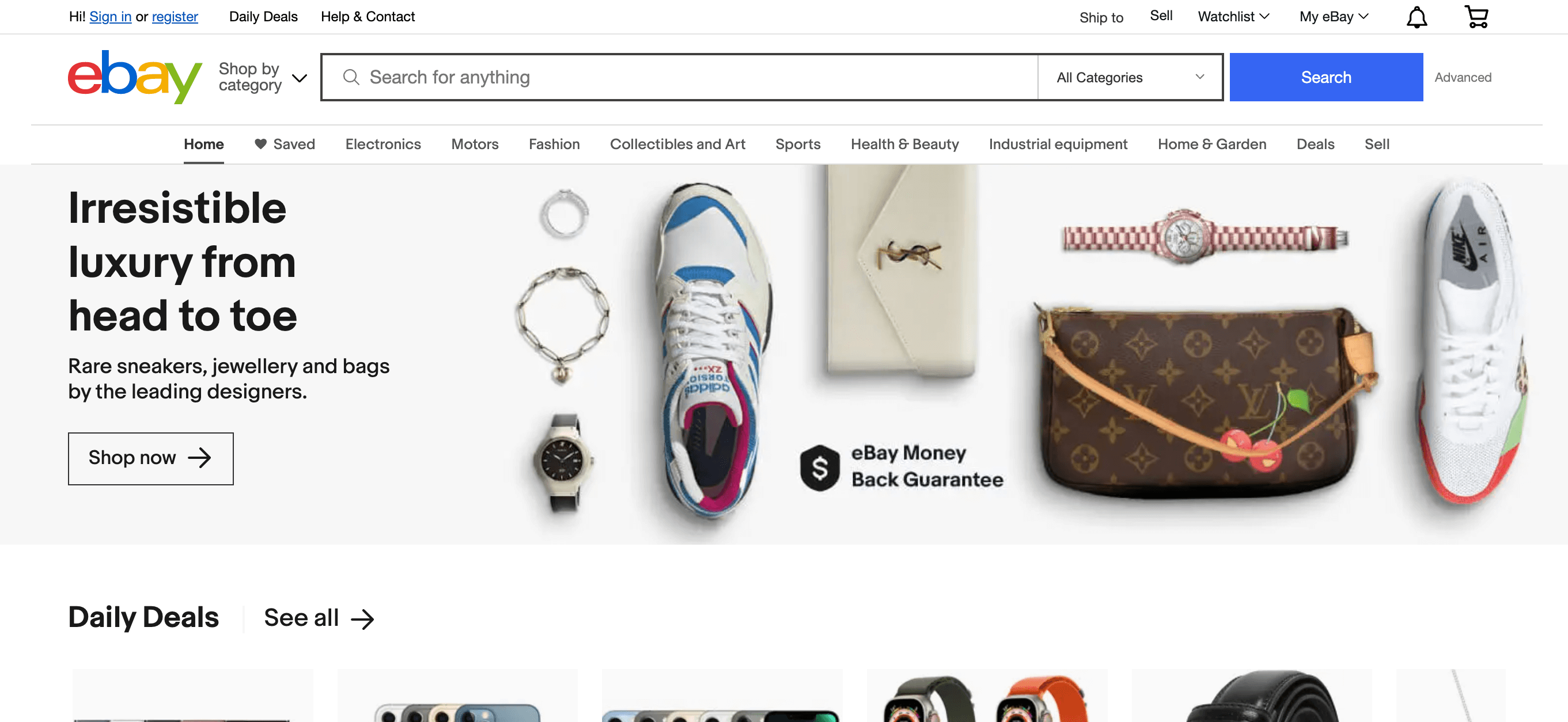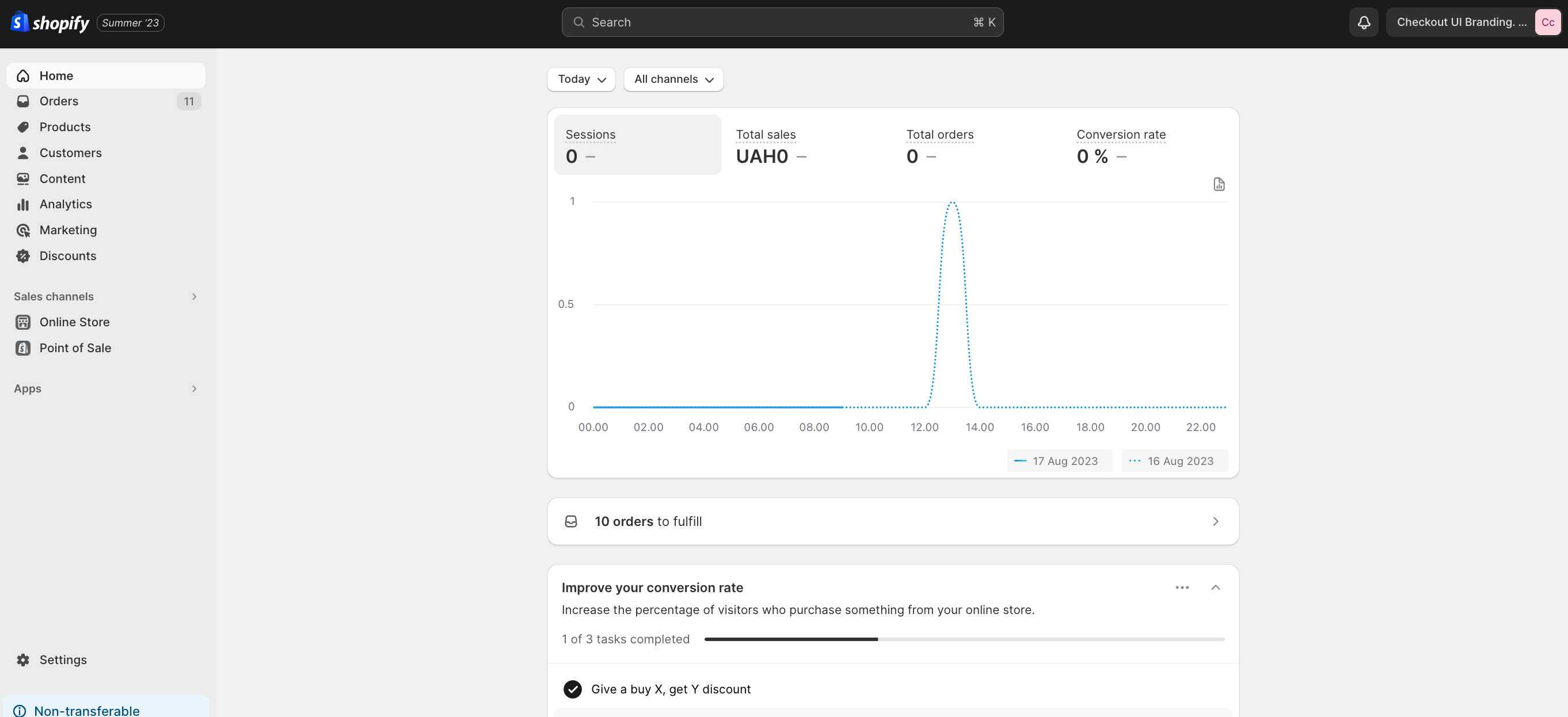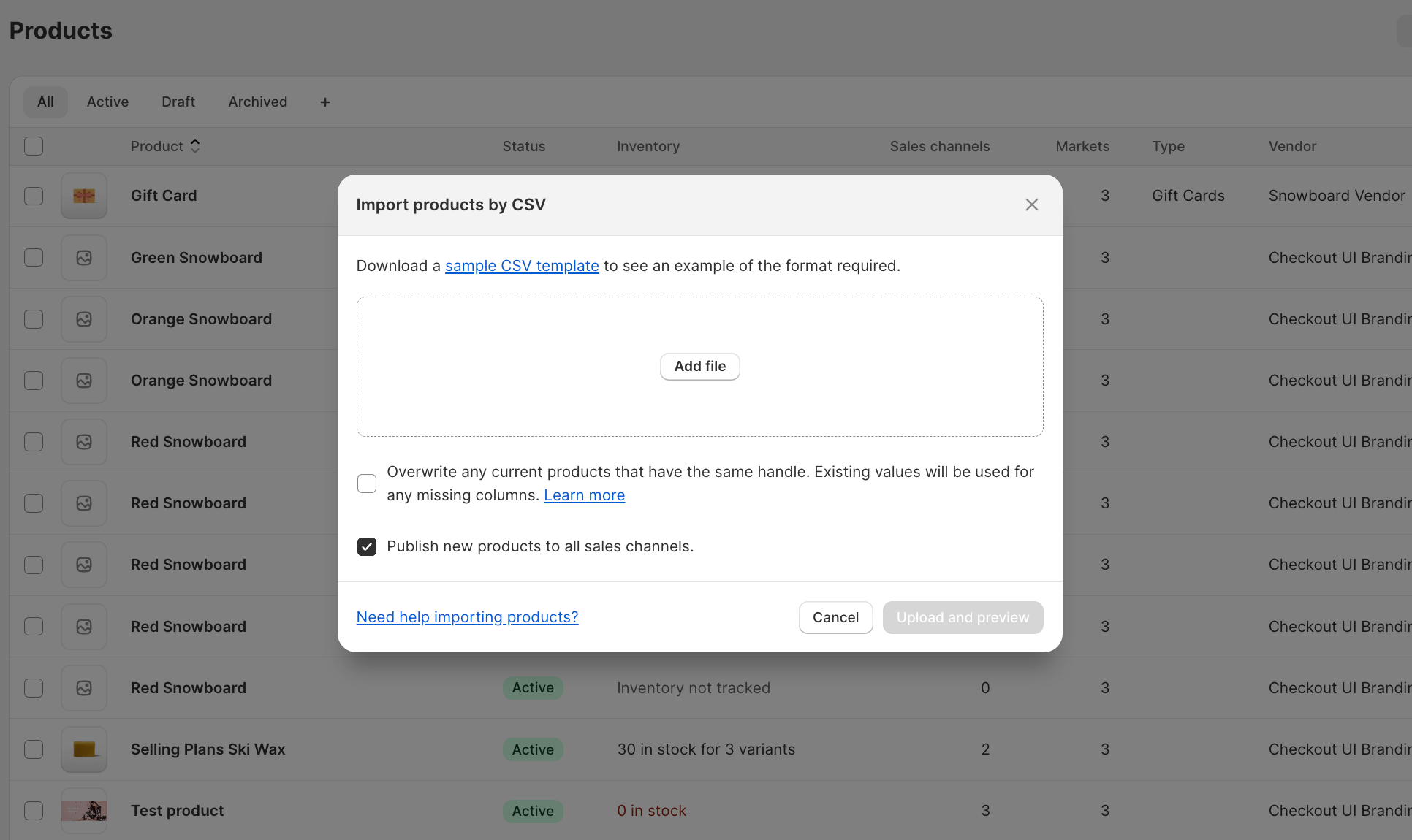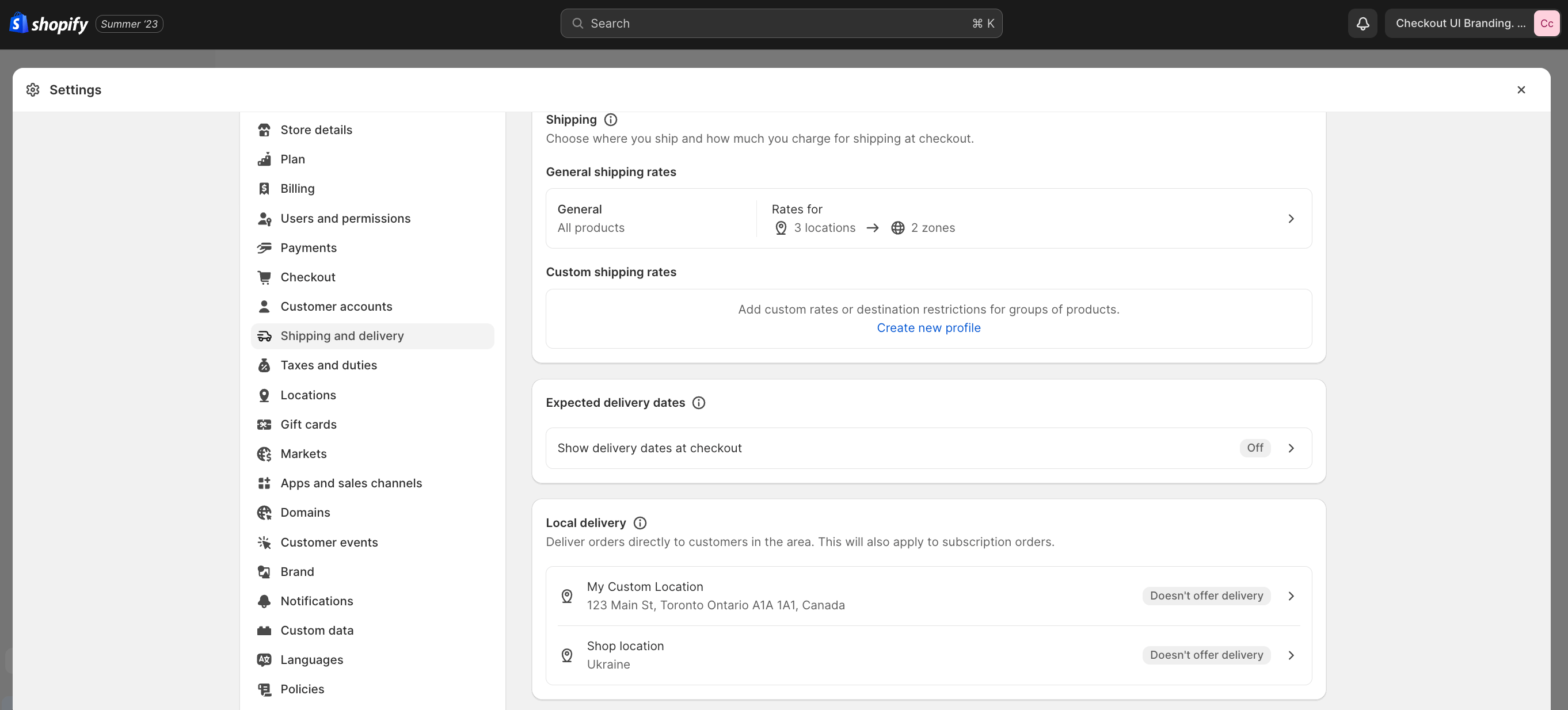From Idea to Reality: How to create an online marketplace like eBay on Shopify
 August 21, 2023
August 21, 2023 Online marketplaces have revolutionized the way we shop and sell products. These platforms provide a convenient and efficient way for sellers to reach a wider audience and for buyers to find a diverse range of products in one place. If you've ever thought about creating your own online marketplace, this article will guide you how to create an online marketplace like eBay on Shopify.
Benefits of creating your own online marketplace.
Before we dive into the details, let's take a moment to understand why creating your own online marketplace can be beneficial. Firstly, it allows you to tap into the growing trend of e-commerce and take advantage of the increasing number of online shoppers. By providing a platform for sellers to showcase their products, you can earn commissions on every sale made through your marketplace.
Secondly, having your own online marketplace gives you control over the user experience and branding. You can shape the marketplace to align with your vision and create a unique selling proposition. This can help you stand out from the competition and attract both sellers and buyers to your platform.
Lastly, an online marketplace offers scalability. As your platform grows, you can attract more sellers and expand your product catalog, increasing the value and revenue potential of your business.
Creating your own online marketplace can offer a wide range of benefits for both sellers and buyers. Here are some of the key advantages:
Profit Generation: As the owner of the marketplace, you can earn revenue through various monetization strategies such as transaction fees, subscription plans, featured listings, and advertising. This can provide a sustainable source of income.
Diverse Product Range: An online marketplace allows multiple sellers to offer a variety of products and services, leading to a broader selection for customers. This diversity can attract more buyers and enhance the overall shopping experience.
Lower Overhead Costs: Operating an online marketplace often involves lower overhead costs compared to running a physical store. You don't need to invest in physical space, utilities, and other traditional retail expenses.
Scalability: Online marketplaces have the potential to scale quickly, accommodating an increasing number of sellers and buyers without the limitations of physical space. This scalability can lead to rapid growth and increased profitability.
Network Effect: A successful marketplace can create a network effect, where more buyers attract more sellers and vice versa. This positive feedback loop can make your platform more valuable and competitive over time.
Reduced Marketing Costs: With multiple sellers contributing to the platform's marketing efforts, the cost of customer acquisition can be shared. Sellers can also leverage the marketplace's existing user base, saving on individual marketing expenses.
Enhanced User Experience: A well-designed online marketplace can offer features like easy search and navigation, secure transactions, customer reviews, and seller ratings. These features enhance the overall user experience and build trust among users.
Data Insights: Running an online marketplace provides you with valuable data about customer behavior, popular products, and market trends. This data can be analyzed to make informed decisions and optimize the platform for better performance.
Global Reach: An online marketplace isn't constrained by geographic limitations, allowing you to tap into a global customer base and enable sellers to reach customers they might not have otherwise.
Flexibility for Sellers: Sellers benefit from an established platform that already has an audience, eliminating the need to build their own online store and attract buyers from scratch.
Cross-Selling Opportunities: The nature of a marketplace encourages cross-selling, where customers exploring one seller's products might discover and purchase from other sellers on the same platform.
Partnerships and Collaborations: As the owner, you can establish partnerships with payment processors, shipping companies, and other service providers, negotiating favorable terms that benefit both your platform and sellers.
Brand Building: A successful marketplace can become a recognized brand in its own right, further boosting its credibility and attracting more users.
Innovation: Running a marketplace involves staying up-to-date with industry trends and customer preferences. This push for innovation can lead to the introduction of new features and services that keep your platform competitive.
While creating your own online marketplace offers numerous benefits, it's essential to carefully plan and execute your strategy to ensure long-term success. It requires effective management, marketing, and a dedication to providing value to both sellers and buyers.
Understanding Shopify and eBay. How to create an online marketplace like eBay.
To create an eBay-inspired online marketplace, we will be using Shopify as the foundation for our platform. Shopify is a popular e-commerce platform that allows you to build and customize your online store. It provides all the essential features and tools required to run a successful online business, including inventory management, payment gateways, and shipping integration.
eBay, on the other hand, is one of the largest online marketplaces in the world. It connects millions of buyers and sellers and offers a wide range of product categories. By drawing inspiration from eBay, we can create a marketplace that is familiar and intuitive for users.
Shopify:
Shopify is an e-commerce platform that allows individuals and businesses to set up their own online stores and sell products. It provides a user-friendly interface and a range of tools to help you create and manage your online store without needing advanced technical skills. Here are some key features and aspects of Shopify:
Online Store Creation: Shopify provides customizable templates and themes that allow you to design your online store according to your branding and style.
Product Management: You can easily add, organize, and manage your products. Each product can have its own details, images, variants (like different sizes or colors), and pricing.
Payment Gateways: Shopify supports various payment gateways, enabling you to accept payments from customers using credit cards, PayPal, and other methods.
Order Management: You can track and manage customer orders, process refunds, and update order statuses.
Inventory Management: Shopify helps you keep track of your inventory levels, automatically updating them as sales are made.
Marketing and SEO: It offers tools for optimizing your store for search engines (SEO) and integrating with social media for marketing purposes.
App Store: Shopify has an extensive app store where you can find various plugins and extensions to add additional functionality to your store, such as email marketing, analytics, and more.
Security: Shopify takes care of hosting, security, and technical aspects, so you can focus on running your business.
eBay:
eBay is one of the world's largest online marketplaces where individuals and businesses can buy and sell products through auctions or fixed-price listings. Here are some key features and aspects of eBay:
Auctions and Fixed-Price Listings: eBay allows sellers to list items for sale either through auctions, where buyers bid on items, or as fixed-price listings with the "Buy It Now" option.
Seller Ratings: Buyers can rate and review sellers based on their experiences, helping establish trust within the community.
Global Reach: eBay operates in numerous countries, allowing sellers to reach a wide international audience.
Product Categories: eBay covers a wide range of product categories, from electronics and fashion to collectibles and antiques.
Bidding and Sniping: In auctions, buyers place bids on items, and the highest bidder wins. "Sniping" is a strategy where buyers place their bids just seconds before an auction ends to try to win with the lowest possible bid.
Seller Fees: eBay charges sellers various fees based on factors such as listing format, item category, and final sale price.
PayPal Integration: While eBay used to own PayPal, they have separated, but PayPal is still a commonly used payment method on the platform.
Buyer Protection: eBay offers buyer protection policies to ensure that buyers receive the items they purchased in the expected condition.
Both Shopify and eBay offer unique opportunities for individuals and businesses to engage in e-commerce, but they have different approaches and strengths. Shopify is more about building your own branded online store, while eBay is a vast online marketplace with an established user base. The choice between the two depends on your business goals, products, and preferred selling methods.
Shopify eBay integration options
Now that we have a clear understanding of Shopify and eBay, let's explore the integration options available to connect the two platforms. There are several Shopify apps specifically designed for integrating with eBay. These apps provide seamless synchronization of product listings, inventory management, and order fulfillment.
When choosing a Shopify eBay app, consider factors such as ease of use, features offered, customer support, and pricing. Some popular options in the market include "eBay Connect" and "Shopify eBay Integration". Carefully evaluate each app and choose the one that best suits your needs.
Step-by-step guide to creating an eBay-inspired online marketplace on Shopify
Now that we have the necessary background information, let's dive into the step-by-step process of creating your own eBay-inspired online marketplace on Shopify.
Step 1: Set up your Shopify store
Start by signing up for a Shopify account and setting up your online store. Choose a visually appealing theme that matches the aesthetics of an online marketplace. Customize your storefront, including the logo, colors, and fonts, to create a unique brand identity.
Step 2: Install the Shopify eBay app
Once your store is set up, navigate to the Shopify App Store and search for the Shopify eBay integration app of your choice. Install the app and follow the instructions provided by the developer to connect your Shopify store with eBay.
Step 3: Configure the integration settings
After installing the app, you will need to configure the integration settings. This includes linking your eBay seller account to your Shopify store, setting up product synchronization, managing inventory, and defining pricing and shipping rules.
Step 4: Import and manage your product listings
With the integration set up, you can now import your product listings from eBay to your Shopify store. Make sure to optimize your product descriptions, titles, and images to attract buyers. Regularly update and manage your listings to ensure accuracy and availability.
Step 5: Streamline order fulfillment and shipping
Efficient order fulfillment and shipping are crucial for a successful online marketplace. Use the integration app to manage and track orders, print shipping labels, and provide real-time order updates to buyers. Ensure seamless communication between sellers and buyers throughout the process.
Step 6: Implement a secure payment system
Security is paramount in an online marketplace. Choose a secure payment gateway that offers fraud protection and ensures smooth transactions. Popular options include Shopify Payments, PayPal, and Stripe. Set up the payment system and configure the necessary settings to provide a safe buying experience.
Choosing the right Shopify eBay app
When creating your eBay-inspired online marketplace on Shopify, choosing the right integration app is vital. The app you select will determine the functionality and performance of your platform. Here are some key factors to consider when making your decision:
Ease of use: Look for an app that is user-friendly and offers a simple setup process. It should have an intuitive interface that allows you to manage your marketplace effortlessly.
Features: Assess the features provided by the app. Look for capabilities such as inventory synchronization, automated order management, and real-time updates. The more comprehensive the features, the better equipped you will be to run a successful marketplace.
Customer support: Consider the level of customer support offered by the app developer. Look for prompt and helpful assistance in case you encounter any issues or have questions during the integration process.
Pricing: Evaluate the pricing structure of the app. Some apps charge a monthly fee, while others offer a commission-based model. Choose an option that aligns with your budget and expected revenue.
By considering these factors, you can select the Shopify eBay app that will best serve your needs and ensure the smooth operation of your online marketplace.
Tips for successful integration and management eBay Shopify
Creating an eBay-inspired online marketplace on Shopify is just the beginning. To ensure its success, you need to focus on effective integration and management. Here are some tips to help you along the way:
Regularly update your product listings: Keep your marketplace fresh and engaging by regularly updating your product listings. Add new products, remove sold-out items, and optimize your listings to attract buyers.
Provide excellent customer support: Promptly respond to customer inquiries and provide support throughout the buying process. A satisfied customer is more likely to return and recommend your marketplace to others.
Market your online marketplace: Implement a marketing strategy to promote your online marketplace. Utilize social media, email marketing, content marketing, and paid advertising to reach your target audience and drive traffic to your platform.
Monitor analytics and make data-driven decisions: Track key metrics such as sales, conversion rates, and customer feedback. Analyze the data to identify trends and make informed decisions to improve your marketplace's performance.
Promoting your online marketplace
To attract sellers and buyers to your online marketplace, you need to implement effective promotional strategies. Here are some ideas to get you started:
Social media marketing: Leverage social media platforms such as Facebook, Instagram, and Twitter to create brand awareness and engage with your target audience. Share compelling content, run contests, and collaborate with influencers to promote your marketplace.
Email marketing: Build an email list and send regular newsletters to your subscribers. Offer exclusive promotions, highlight new products, and provide valuable content to keep your audience engaged and informed.
Content marketing: Create informative and engaging content related to the products featured on your marketplace. Publish blog posts, videos, and guides that provide value to your audience. Optimize your content for search engines to attract organic traffic.
Partnerships and collaborations: Collaborate with complementary businesses or influencers in your industry. Cross-promote each other's products or run joint marketing campaigns to expand your reach and attract new customers.
Implementing these promotional strategies will help increase the visibility and credibility of your online marketplace, driving more traffic and sales.
Enhancing the user experience on your online marketplace
To create a successful eBay-inspired online marketplace on Shopify, it is crucial to prioritize the user experience. Here are some ways to enhance the user experience on your platform:
Intuitive navigation: Ensure that your marketplace is easy to navigate. Use clear categories, filters, and search functionality to help users find what they are looking for quickly.
Mobile optimization: With the increasing use of mobile devices, it is essential to optimize your marketplace for mobile users. Ensure that your website is responsive and provides a seamless browsing experience on smartphones and tablets.
User reviews and ratings: Implement a review and rating system that allows buyers to provide feedback on their purchases. Display these reviews prominently to build trust and credibility.
Personalization: Use data and analytics to personalize the user experience. Recommend relevant products based on past purchases or browsing history to increase engagement and sales.
Secure transactions: Prioritize the security of your marketplace. Implement SSL certificates and other security measures to protect user data and provide a safe buying environment.
By focusing on these aspects, you can create a user-friendly and trustworthy online marketplace that keeps buyers coming back for more.
Conclusion and final thoughts
Creating your own eBay-inspired online marketplace on Shopify is an exciting opportunity to tap into the world of e-commerce and build a profitable business. By following the step-by-step guide and implementing the tips provided in this article, you can bring your idea to reality and create a successful online marketplace.
Remember to choose the right Shopify eBay app, focus on effective integration and management, and implement promotional strategies to attract sellers and buyers to your platform. Enhance the user experience by prioritizing intuitive navigation, mobile optimization, and personalized recommendations. With dedication and strategic planning, your eBay-inspired online marketplace can become a thriving hub for e-commerce.
Mgroup has a huge quantity of successfully completed e-commerce projects of any complexity, from basic store setups to complex integrations. Let’s start building a solid online presence for your business based on Shopify!












